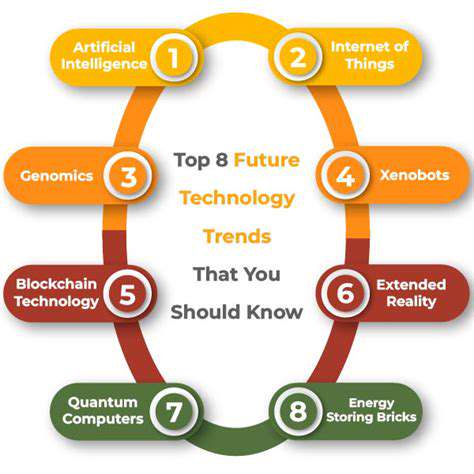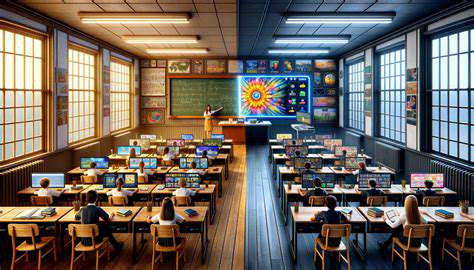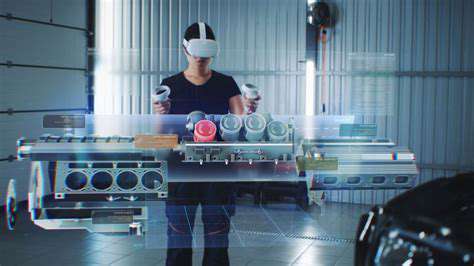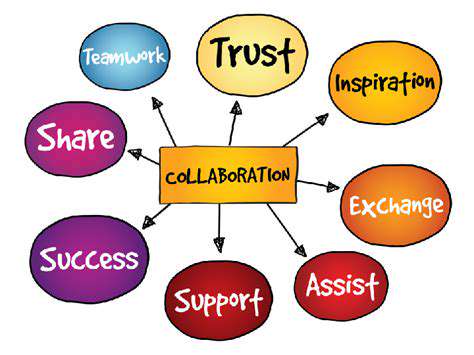AR for Interactive Museum Tours: Bringing Exhibits to Life
Augmented reality (AR) is rapidly transforming the way we interact with the world around us, and museums are at the forefront of this exciting evolution. AR overlays digital information and experiences onto the physical world, creating immersive and interactive tours that engage visitors in a way that traditional methods simply can't match. This innovative approach not only enhances the visitor experience but also provides a deeper understanding and appreciation for the exhibits, fostering a more profound connection to the historical context and cultural significance of the artifacts.
Imagine exploring a historical artifact, not just as a static object, but as a window into the past. AR can bring this vision to life. Through interactive projections and digital overlays, visitors can uncover detailed information about the artifact's history, its creators, and its cultural significance. This enhanced understanding fosters a more meaningful connection with the exhibits, making the experience far more engaging and educational.
Interactive Museum Tours: Beyond the Brochure
Traditional museum tours often rely on brochures and static displays. While these resources are valuable, AR-powered interactive tours offer a dynamic and engaging alternative. By using their smartphones or tablets, visitors can access detailed information, 3D models, and even interactive games relating to the exhibits. This personalized approach caters to different learning styles and allows visitors to explore at their own pace, making the experience more inclusive and tailored to individual interests.
Imagine navigating a historical site through a guided AR tour. The app guides you through the exhibits, providing contextual information and interactive elements. This personalized experience fosters a deeper understanding of the narrative, making the museum visit more meaningful and memorable. You can even virtually walk through historical events, interacting with key figures and places in a dynamic and engaging way, taking the visitor beyond the typical passive museum experience.
AR for Educational Enrichment: Inspiring the Next Generation
Beyond simply enhancing the visitor experience, AR in museums holds immense potential for educational enrichment, particularly for younger audiences. Interactive games, quizzes, and educational content integrated into the AR experience can make learning fun and engaging. By incorporating interactive elements, museums can foster a deeper understanding and appreciation of the artifacts and historical context, making learning more accessible and enjoyable for children and adults alike.
AR can create interactive simulations of historical events, allowing visitors to engage with the past in a dynamic and interactive way. This approach fosters a deeper understanding and appreciation for history, making the learning process more intuitive and memorable. Children can explore ancient civilizations, interact with historical figures, and even participate in virtual reconstructions of past events, fostering a love of history and culture in a way that traditional methods simply cannot.
Interactive Exhibits That Spark Curiosity
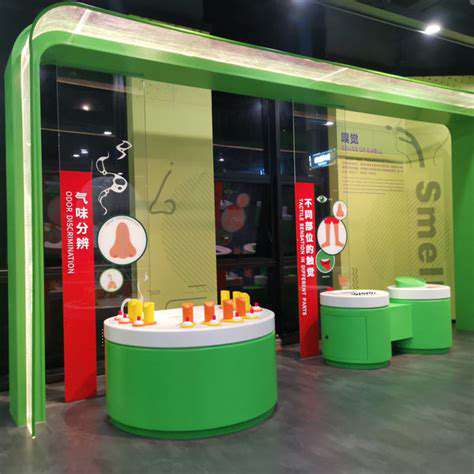
Interactive Exhibits Designed for Engagement
Interactive exhibits are crucial for museums and educational spaces, fostering a deeper understanding and appreciation of the subject matter. They encourage active participation and exploration, transforming passive observation into an active learning experience. By incorporating interactive elements, exhibits can make complex concepts more accessible and engaging for visitors of all ages and backgrounds. This approach is more effective than simply presenting static displays, as it encourages active learning and memory retention.
These exhibits often use a combination of technology and hands-on activities to engage visitors. From simple touchscreens to complex simulations, the possibilities for interactive engagement are vast. This approach creates an environment where visitors feel empowered to explore and discover, rather than just passively absorbing information.
Engaging Technologies in Interactive Exhibits
A key aspect of effective interactive exhibits is the utilization of cutting-edge technology. This can include virtual reality (VR) experiences, augmented reality (AR) overlays, and sophisticated touchscreens that provide instant feedback and information. These technologies can bring abstract concepts to life, allowing visitors to experience them in a more tangible and memorable way. The use of technology also allows for dynamic content updates and personalized learning paths, making the exhibits relevant and engaging for years to come.
The proper integration of technology is essential for creating a seamless and intuitive user experience. Clear instructions, intuitive interfaces, and accessible controls are vital for ensuring that visitors of all abilities can comfortably interact with the exhibit and fully appreciate its content.
Sensory Experiences for All Audiences
Interactive exhibits should cater to a diverse range of learning styles and sensory preferences. Consideration should be given to the varying needs of visitors, ensuring that the exhibits are accessible and engaging for everyone. This involves careful design and thoughtful implementation of sensory elements. Providing a variety of approaches, such as tactile displays, audio guides, and visual aids, can broaden the appeal and impact of the exhibits.
This approach is important for creating a welcoming and inclusive environment for all visitors, including those with special needs or different learning styles. By acknowledging and addressing diversity in sensory preferences, museums can ensure that every visitor has an enriching experience.
Fostering Exploration and Discovery
Interactive exhibits should be designed to spark curiosity and encourage exploration. They should not just present information, but rather facilitate a journey of discovery. Well-designed exhibits often encourage visitors to ask questions, make connections, and form their own conclusions. This approach fosters critical thinking and problem-solving skills, making the learning experience more meaningful and impactful.
This can be achieved through carefully curated collections, interactive displays, and engaging activities. Well-designed exhibits provide a platform for visitors to interact with the subject matter in a meaningful way, promoting deeper understanding and a lasting impact.
Educational Value and Impact
Ultimately, the goal of interactive exhibits is to enhance the educational value of the experience. They should not only be entertaining but also stimulate critical thinking, problem-solving, and a deeper understanding of the subject matter. The exhibits should go beyond simply presenting facts; they should encourage visitors to analyze, interpret, and connect the information to their own lives.
By incorporating interactive elements, museums and educational institutions can create a dynamic and engaging learning environment. This not only improves visitor satisfaction but also fosters a deeper appreciation for the subject matter, making learning an active and enjoyable process.
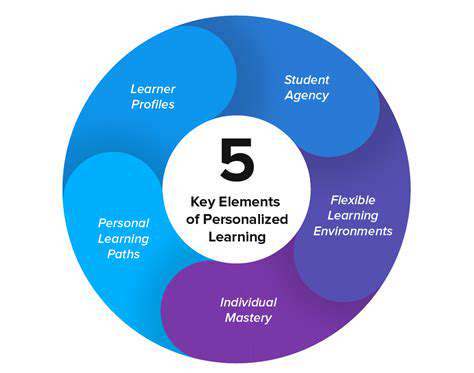
A critical aspect of assessing candidate qualifications involves deeply analyzing their past experiences. This entails scrutinizing the candidate's resume, cover letter, and any other relevant documentation to gain a comprehensive understanding of their background. A meticulous review should identify specific accomplishments, challenges overcome, and key responsibilities held. Examining these details provides valuable insight into the candidate's skillset and potential for success in the role.
Enhancing Accessibility and Inclusivity
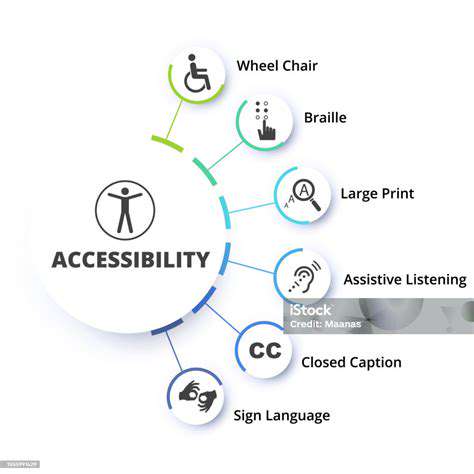
Improving Website Navigation for Users with Disabilities
A crucial aspect of enhancing accessibility is ensuring that website navigation is intuitive and easily understandable for all users, including those with disabilities. This involves using clear and concise labels for navigation links, employing logical structure, and providing alternative text for images used in navigation. Implementing these practices not only improves the user experience for individuals with visual impairments but also benefits all users, leading to a more inclusive and user-friendly website. Providing keyboard-only navigation is also essential, enabling users who cannot use a mouse to seamlessly navigate the site.
Furthermore, employing clear visual cues and consistent formatting throughout the website can significantly enhance the accessibility of navigation for users with cognitive disabilities. Using contrasting colors and avoiding overly complex layouts can reduce visual stress and improve comprehension for all users.
Designing Accessible Forms
Web forms play a vital role in user interaction, but their design needs careful consideration for accessibility. Clear and concise labels are essential for each form field, as are instructions that explain the purpose of the field and the expected format of input. Providing error messages that are specific and helpful can significantly improve user experience and reduce frustration.
Using appropriate input types (e.g., date pickers, email fields) can also make the process easier and more user-friendly. This ensures that users with diverse needs can complete forms successfully without undue effort or confusion.
Providing Alternative Text for Images
Images can be a powerful tool for conveying information, but their impact is limited if users with visual impairments cannot access the content they convey. Providing descriptive alternative text (alt text) for all images is crucial, summarizing the image's content and significance in a concise manner. This ensures that users using screen readers can understand the context of each image and its role in the overall presentation. Furthermore, alt text improves SEO (search engine optimization) by providing more context to search engines about the image's subject matter.
Implementing Screen Reader Compatibility
Ensuring compatibility with screen readers is a fundamental aspect of website accessibility. Web developers should test their websites with various screen readers to identify and address any usability issues. This involves ensuring that all interactive elements, such as buttons, links, and form fields, are properly identified and navigable by screen reader software.
Furthermore, providing clear and concise headings, lists, and other structural elements assists screen reader users in navigating the site effectively. This improves user experience for visually impaired users and enhances the overall accessibility of the site.
Using Clear and Consistent Formatting
Using clear and consistent formatting across the entire website is essential for accessibility. This includes using appropriate headings, lists, and paragraphs to structure the content logically. Consistent use of font sizes and colors also contributes to a more accessible and readable experience for users with visual impairments. Employing consistent spacing and layout can reduce visual clutter and improve readability.
Considering Cognitive Accessibility
Designing for cognitive accessibility is just as important as physical accessibility. This involves creating a website that is easy to understand and navigate for users with cognitive disabilities or learning differences. Using simple language, clear instructions, and avoiding excessive use of jargon are crucial steps. Employing visual aids, clear calls to action, and predictable navigation patterns can make the website more intuitive and easier to use for users with cognitive differences.
The Future of Museum Experiences: Beyond the Walls
Augmented Reality: A New Dimension in Museum Exploration
Augmented reality (AR) is poised to revolutionize the museum experience, transforming static displays into dynamic, interactive journeys. By overlaying digital information and experiences onto the real world, AR can bring historical figures to life, provide detailed explanations of artifacts, and offer visitors a deeper understanding of the exhibits. Imagine walking through a historical battlefield and seeing the soldiers in their uniforms, hearing their voices recounting their experiences, or interacting with 3D models of ancient tools and machines. This immersive approach goes far beyond simply reading a label; it brings history to life in a way that resonates deeply with visitors.
AR apps can also personalize the museum visit. Users can choose their preferred language for audio guides, explore different perspectives on an exhibit, or access specialized content based on their interests. This level of customization fosters a more engaging and enriching experience, allowing visitors to connect with the museum's collections in a more meaningful way. It also caters to a wider audience, including those with disabilities or diverse learning styles, making the museum experience accessible and inclusive for everyone.
Interactive Exhibits and Educational Tools
AR technology offers exciting possibilities for interactive exhibits. Museums can use AR to create interactive displays that allow visitors to manipulate objects, explore virtual environments, and even participate in simulated historical events. This dynamic approach transforms passive viewing into active learning, fostering a deeper understanding and appreciation for the exhibits.
Beyond interactive displays, AR can enrich educational tools. Imagine a child using an AR app to virtually explore the inside of a dinosaur skeleton, or a student examining a 3D model of the human heart with detailed anatomical information overlaid directly onto the model. These interactive tools can make learning more engaging, accessible, and memorable. The possibilities for enhancing educational programs through AR are practically limitless.
Bridging the Gap Between Physical and Digital Worlds
One of the most significant advantages of AR in museums is its ability to bridge the gap between the physical and digital worlds. By overlaying digital information onto physical artifacts, AR creates a seamless blend of the tangible and the virtual. This approach allows visitors to experience the past in a highly engaging and interactive way, making history come alive. It's not just about seeing images; it's about experiencing the object and its story in a way that feels both real and imaginative.
Furthermore, AR can promote accessibility and inclusivity by offering different perspectives and levels of detail. Visitors with visual impairments can use AR to explore intricate details of artifacts, while those with auditory impairments can access written descriptions or audio narrations. This commitment to inclusivity ensures that everyone can fully appreciate the museum's collections and engage with the stories they tell.



